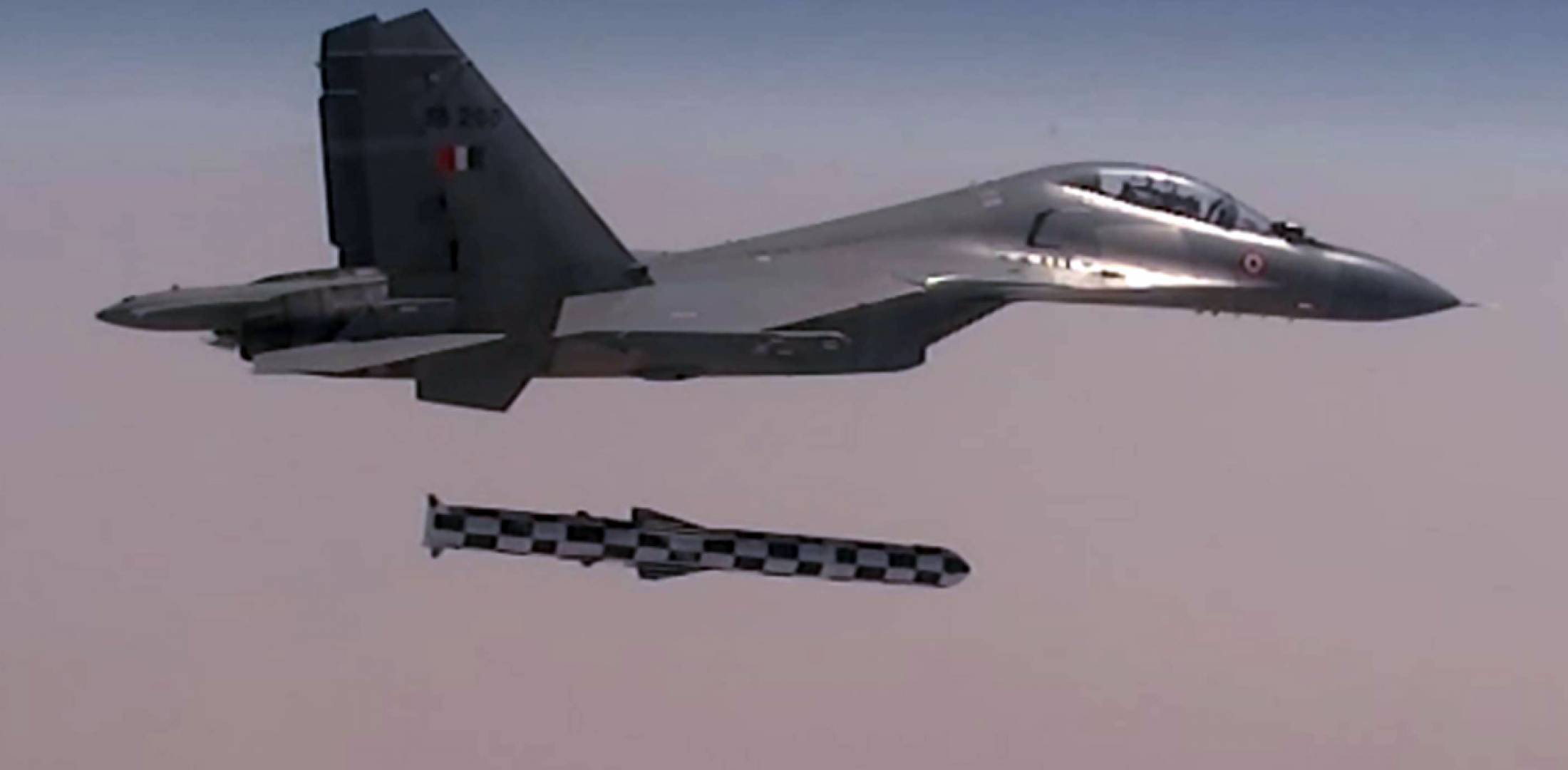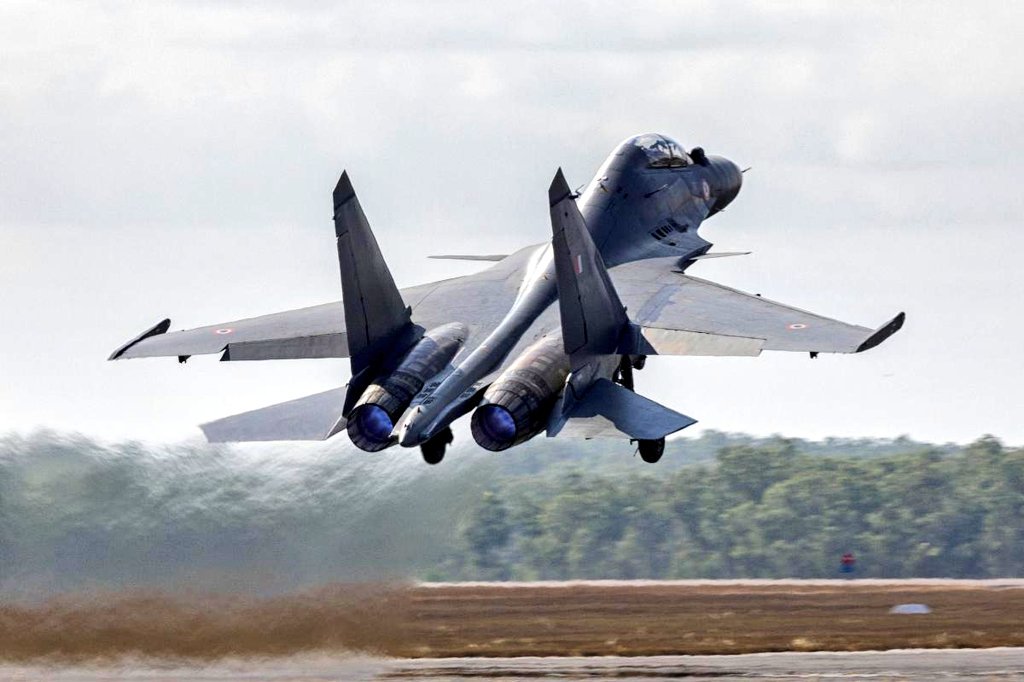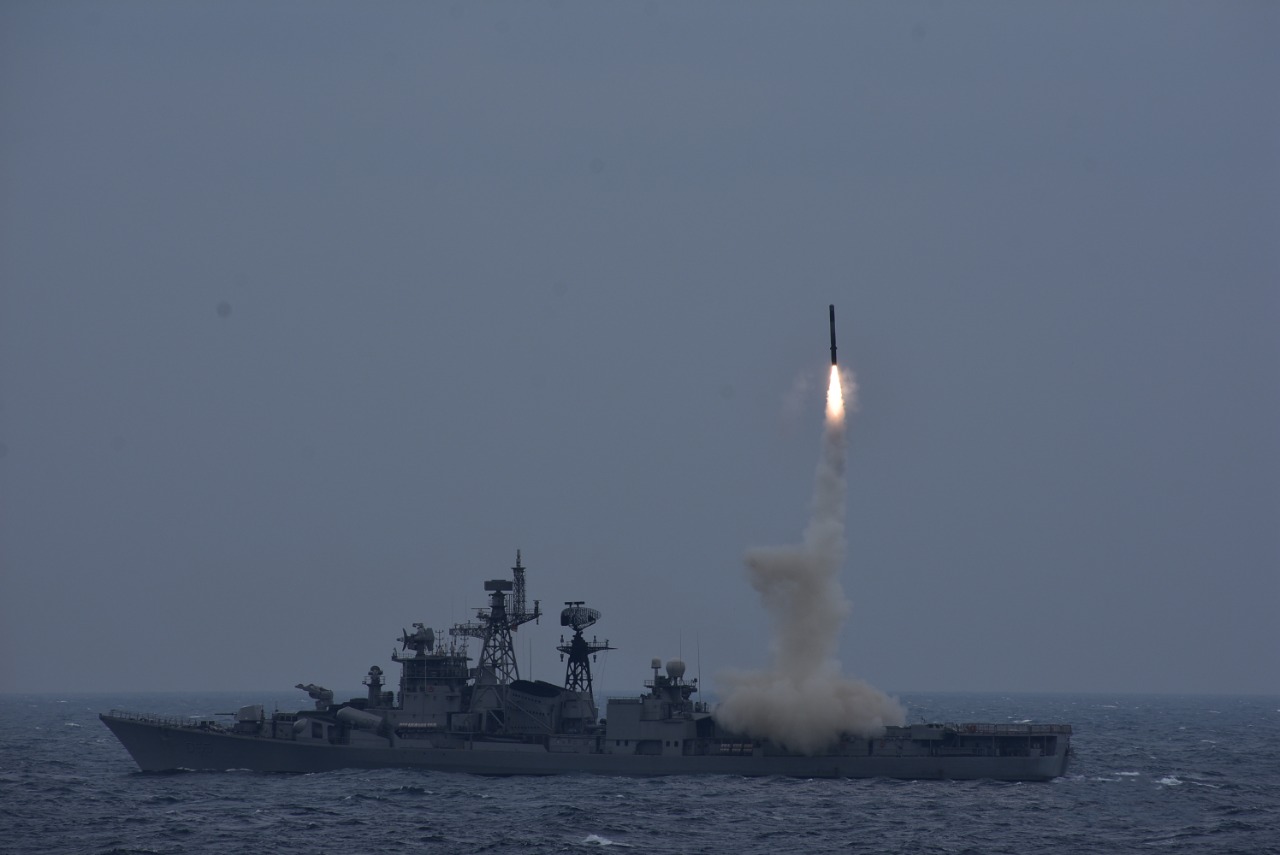The Indian Air Force’s (IAF) Su-30MKI fighters will be re-armed with BrahMos missiles in the next two or three years, according to the co-director of BrahMos Aerospace, Alexander Maksichev.
The IAF had earlier signed a contract for the delivery of air-launched cruise missiles beginning January 2018. This variant of the BrahMos, considered the world’s fastest supersonic cruise missile, was designed to equip approximately 40 Su-30MKI fighter aircraft.
The Su-30 MKI
The Sukhoi Su-30MKI is a multi-role fighter jet developed jointly by Russia’s Sukhoi Design Bureau and India’s Hindustan Aeronautics Limited (HAL). In 1996, the Indian Defense Ministry had signed the first contract with the Russian state intermediary company Rosvooruzhenie for the delivery of Su-30MKI jets for the IAF.

The delivery was slated for the years 2002-2004. In 2000, another contract was signed for the licensed production of the Su-30MKi at the facilities of Hindustan Aeronautics Limited (HAL).
The aircraft has an aerodynamic airframe, that is made of titanium and high-intensity aluminum alloys. The cockpit can accommodate two pilots and is equipped with an integrated avionics suite consisting of an Elbit Su 967 head-up display (HUD), seven active-matrix liquid crystal displays (AMLCD), and primary cockpit instrumentation.
The aircraft combines a fly-by-wire (FBW) flight control system. Air-to-ground missile guidance is provided by a large monochromatic display screen located in the rear cockpit. The aircraft also has an N011M passive electronically scanned array radar, OLS-30 laser-optical locator system, and lightning target designation pod to lead the air-to-surface missile and laser-guided munitions.
India, China ‘Key Contenders’ To Acquire Russia’s F-35 Stealth Fighter Jet – ‘Checkmate’
The Su-30MKI can carry Vympel-manufactured R-27R, R-73, and R-77 air-to-air missiles, and rocket pods such as KAB-500 and KAB-1500 laser-guided bombs. The aircraft has two AI-31FP turbojet engines, and each engine is capable of generating a full afterburn thrust of 12,500kgf.

As of November 2017, IAF modified two Su-30MKI fighter jets for air-launched BrahMos cruise missiles, according to Russian news agency TASS.
The Brahmos Missile
The BrahMos cruise missile is developed by the BrahMos Aerospace, a joint venture of India’s Defence Research and Development Organization (DRDO) and Russia’s Mashinostroeyenia. The missile is named after two rivers, India’s Brahmaputra and Russia’s Moskva.
The BrahMos Aerospace was established after an inter-governmental agreement was signed between India and Russia in 1998. The first BrahMos missile was tested in 2001, and since then, the missile has been successfully tested from various platforms, including land, ships, air, and submarine.
The BrahMos has been derived from the Russian P-800 Oniks/Yakhont supersonic anti-ship cruise missile. Its propulsion is based on the Oniks and the guidance system has been developed by the BrahMos Aerospace.
The ship and land-based missiles can carry a conventional armor-piercing warhead weighing up to 200 kg, while the aerial variant can carry a warhead weighing up to 300 kg. The BrahMos can also track surface targets as low as 10m in altitude. The missile has a flight range of up to 290 km and can reach a speed of Mach3.
#IndianNavy Guided Missile Destroyer #INSChennai fired #BrahMos supersonic AShM during ongoing #WesternFleet exercises. Target engaged at max range, with destructive effect.#AtmaNirbharBharat @SpokespersonMoD @DefenceMinIndia @PMOIndia @DRDO_India pic.twitter.com/i0rErDkibz
— SpokespersonNavy (@indiannavy) October 19, 2020
On March 12, 2018, India successfully test-fired a 290 km-range submarine-launched version of the BrahMos missile in the Bay of Bengal becoming the first country in the world to have this capability.
BrahMos to Counter China?
Amid the border stand-off with China since last year, the Indian armed forces conducted a series of successful tests of the BrahMos missile.
Experts noted the Army, Navy, and Air Force conducting back-to-back tests was a further sign of tri-service integration where the land, air, and sea assets worked together to display a joint deterrence.

Earlier in 2020, Su-30MKI equipped with BrahMos supersonic cruise missiles were also inducted at the airbase at Thanjavur. The presence of the Su-30MKI was deemed significant for the protection of the island territories and sea lines of communication in the Indian Ocean region.
The integration of the air-launched version was done indigenously by BrahMos Aerospace, HAL, and the IAF.
US Must Explore Pakistan-Style Military Operation In Cuba – Miami Mayor On Cuban Crisis
The Brahmos provides India with an edge in the high-altitude border, The National Interest noted. It said the missile has the ability to hit ground-based targets and mount precision attacks against fixed installations such as radars, command centers, air bases as well as enemy missile batteries.
In continuation of Brahmos missile firing, Western command of the #IndianArmy successfully fired a Brahmos missile today in the Bay of Bengal and hit the designated target at over 250 km with pinpoint accuracy. #NationFirst pic.twitter.com/fPh4VIDP8j
— ADG PI – INDIAN ARMY (@adgpi) November 25, 2020
In 2018, the Indian Defense Ministry signed a deal with BrahMos Aerospace on the re-armament of 40 Su-30MKI jets with the BrahMos cruise missile system.
“Many of the Indian Air Force’s Su-30MKI fighters will be armed with BrahMos cruise missiles in 2-3 years. These jets are being modernized as planned by the IAF. New launcher for the missiles and support systems are installed on the jets as per the schedule,” Maksichev said.
The new missiles will significantly enhance the IAF’s strategic capacity to eliminate long-range targets in the Indian Ocean, the official added.
With Inputs from Sputnik




